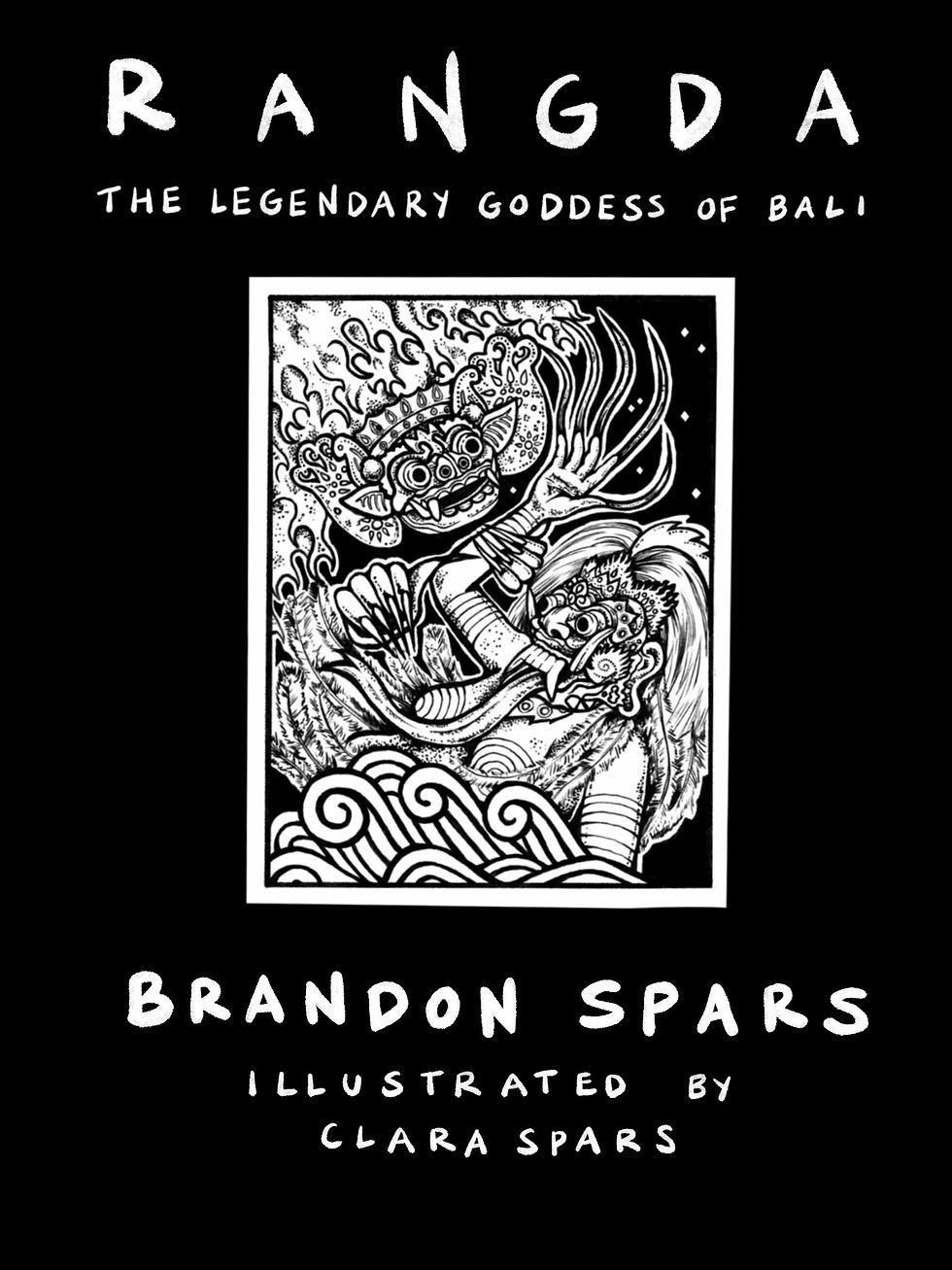Rangda is Out!
- Brandon Spars

- Aug 16, 2020
- 3 min read
Updated: Oct 6, 2020

All my life I have wanted to put together a book about the Balinese deity, Rangda. She first captured my imagination more than thirty years ago when I was a volunteer English teacher at a university in Bali. I went to a temple cleansing ritual, which to my surprise took place late at night. There she was, the silhouette of her six inch fingernails against the dim glow of clouds of incense illuminated by hissing gas lanterns. A man, in trance, was performing her role as the guardian of the village, her energy believed to be truly present in his body as he twirled and jigged in front of the entire village congregation. Alternately, eerie screams and cries would issue from beneath the elaborate mask that featured boars tusks, mirrors, and wood cared into bulbous eyes and hideous fangs. A full mane of horse hair was tangled with intestines fashioned from fabric in trusses reaching the player's knees.
Rangda has both mythical/religious and historical origins, and this book traces them both. The two academic chapters pull on research that was originally done for my MA thesis in 1995, but I have done much to bring it up to date. Therefore it traces the early interpretations made by scholars such as Margaret Mead and Clifford Geertz to the new interpretations of her character by Balinese artists such as Cok Sawitri.
The heart of the book is unique from other books about Rangda. It features a set of drawings by my daughter, Clara, who is exploring the Balinese heritage she received from her mother, who is from Canggu, Bali. These drawings were inspired by her own time spent in Bali as well as the personal anecdotes that I share in the book. My tales frame a more casual version of the Rangda myth, but one that highlights an important role very seldom discussed with regard to Rangda: her capacity to renew and rejuvenate the land and its people who have lived with limited resources for more than two millennia, farming the same small patches of land without pesticides or chemical fertilizers.
Rangda is one manifestation of "The Goddess," which appears within a spectrum that ranges from this horrific and fierce form (along with Kalika or Kali) to Durga, and ultimately to the refined, creative, and beautiful Uma. In Bali this spectrum is symbolized in the very core of Balinese culture with holy water. Holy water combines the nourishing upstream quality of water (its capacity to produce vast fields of golden rice) with its downstream, purifying quality (and its ability to wash away pollution and carry it ultimately to the ocean. Whereas the gentle, refined manifestations of the divine feminine (Dewi Sri and Dewi Danau) are associated with the upstream water, Rangda is that water as it leaves, carrying away the corrupting elements to her domain in the ocean.
It was rewarding to revisit the research I did in the 90s and to add to it with the work that has been done by scholars such as Michele Stephen and the literary contributions made by artists such as Cok Sawitri, Toeti Heraty, and Goenawan Mohamad. More rewarding was watching my daughter, Clara, internalize the myths and legends and then process them through her beautiful drawings. Her drawings are the best part of the book.
This book was published by Wayzgoose Press, which is devoted to educational books and textbooks. As a high school teacher myself, I am donating all my proceeds to the Bali Muda Foundation, which is devoted to supporting Balinese teachers as they build a generation of youth dedicated to maintaining a sustainable environment. Rangda is the perfect symbol for this future generation of environmentalists to rally around!
Please click the link below to watch the author & illustrator discussion about the book:
Brandon and Clara's photo by Stella Rose Photography






Comments